I paddle exclusively with traditional style paddles and so far I have been forced to carry a Euro paddle as a spare.
I rarely had to use my spare but it would be unwise to venture out at sea without one; after all if I lost/broke my main paddle I would be left using just my hands or having to be towed.
My DIY split Aleut paddle was never tested in rough waters but I am not sure if it would have held up.
Some paddlers (Greg Schwarz for example) carry a full size GP on the front deck of their kayak.
I tried to configure a way to carry a full size on my kayak but the deck is shaped differently and just would not work. A full size paddle would not sit flat and would protrude too far outside the deck risking to catch a wave in heavy seas and possibly dislodge.
My Zegul 520 doesn't lend itself to have a split paddle up front either; really the best place it the rear deck.
Northern Light sectional carbon paddles seem to almost have been designed in conjunction with that kayak; the split NLP sits incredibly well in the recess of the deck.
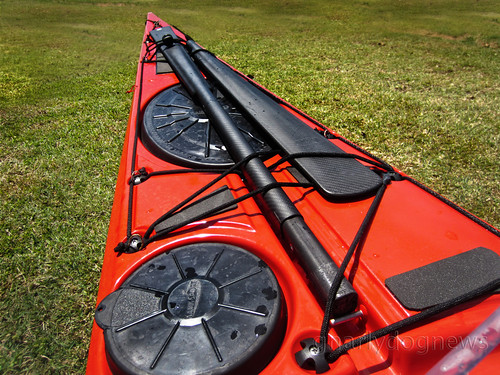
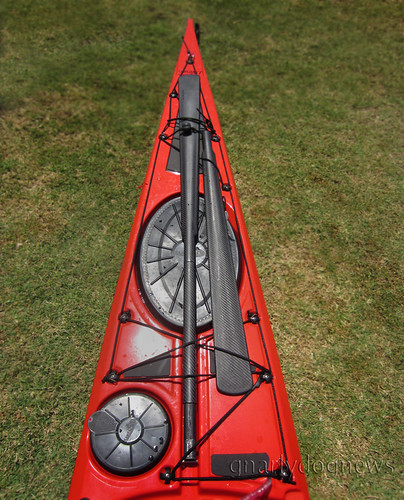
No other paddle that I have tried sits as secure and has such a low profile.
Retrieving the NLP is much easier than my Euro paddles, that must be secured by a tight bungee wrapped around the shaft to prevent dislodging in heavy seas.
While the carbon Greenland is a real strong paddle I was wondering what would happen if I had to retrieve and assemble one in bumpy conditions.
Would the inserted shaft really fit tightly enough to paddle for a while and, without being screwed together, not come apart?
Well, I never really tried it but I didn't want to find out by accident.
I kind of like things to be really secure and after discussing the idea with Paul from Northern Light I sourced a little plastic plug that can be just pushed into the metalthread instead of having to use the Allen key stainless steel screw.
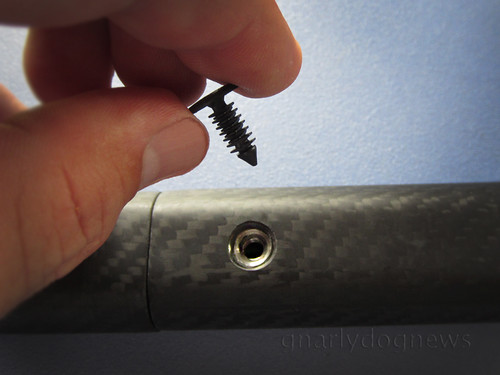
Of course I will remember to have a few of those nifty plugs handy in my PFD.
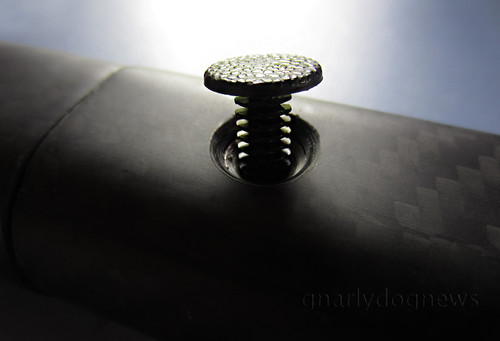
After some testing, the plastic plug seems to really secure the paddle together and no amount of pulling managed to separate it.
The NLP approach to positively assemble the sections with fasteners instead of a snap-together style joiner is in my experience a better solution.
On my carbon Euro paddles the so beautiful tight joiner, that would fit perfectly together when new, soon developed a bit of slop; eventually the paddle would wobble so bad that it needed to be replaced, luckily under warranty.
An alternative to a full size paddle it to carry a Northern Light paddle in the "storm" format.
Every NLP comes with a joiner that transforms a full size paddle into a short one that has a very short loom. A storm paddle sits perfectly fully assembled on the back of my deck without much protrusion past the stern.
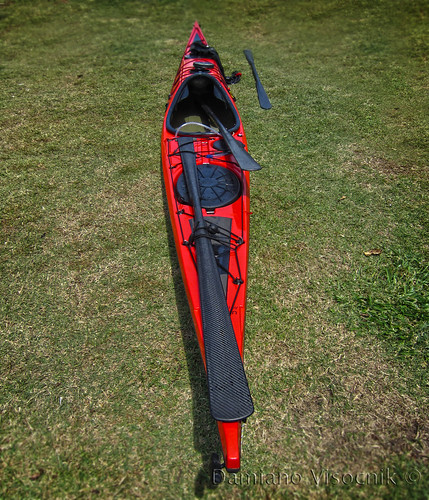
NLP on rear deck in "storm" configuration
A storm paddle is a fully functional alternative to a full size GP but it takes a bit of practice to develop a solid sliding stroke.
A skilled paddler can use a storm GP as efficiently as a full sized one but for now I am not confident to use a storm paddle in the surf; my rolling however seems to be unaffected.
.



Great shot of the 2 piece on your rear deck; fits like a glove and looks like it was custom-made for the purpose. On the storm configuration, it looks like a wave could whip that end around a bit - or is that just my angle of view? Easy assembly is a real virtue for those occasions where you might be bobbing around in the waves sans your primary paddle. Surprising how much the view changes (diminishes) when you're "in" the water as opposed to "on" the water, and how much more difficult some things become.
ReplyDeleteMoulton
Moulton, that storm GP on rear deck does look like a bit exposed but the rear bungee cord has a rubber ball that keeps the paddle in place to one side in line with the forward bungee... it all aligns solidly. In saying that I have not tried back surfing with it yet and see if really is bombproof.
ReplyDeleteI like the fact that in the storm configuration, the NLP paddle is ready to go with no assembly.
ReplyDeletegreat idea about little plastic plugs instead of screws, try this for making a better join : wrap some teflon tape (used in plumbing) round the insert part of loom, makes a : "tighter connection between loom & blade".
ReplyDelete